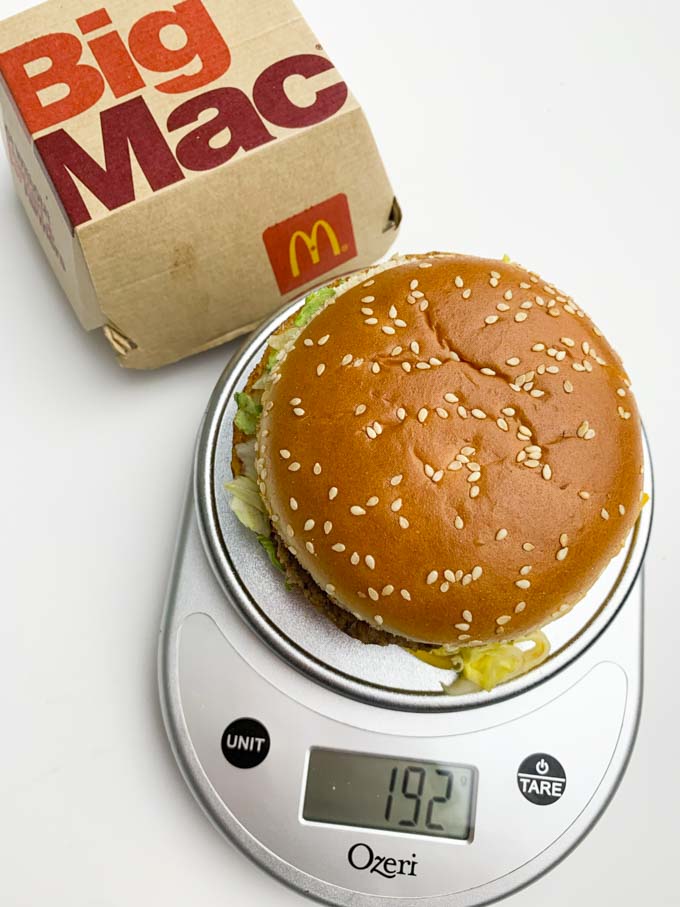
He has Medicaid, which covers dental care. His feet ache from walking and a broken tooth kept him up all night. Trevor would like to get clean, he says, but not today. “You get diarrhea and vomiting, agitation and incredible cravings to take more.” “It’s incredibly uncomfortable,” Hendrickson said.
HOW MUCH DOES A BIG MAC COST IN OREGON SKIN
The pills are short acting, lasting two to three hours before withdrawal symptoms start with joint and skin pain. Rob Hendrickson, director of the Oregon Poison Center at Oregon Health & Science University. “If you are someone who uses a large amount of opioids every day, this may be a very tolerable amount,” said Dr. Trevor says he’s not likely to overdose because his body is habituated to the substance. “Adolescents are often experimenting with different substances, and because fentanyl is so potent, it doesn’t really lend itself to experimentation because one pill can lead to a deadly overdose,” Leitz said. They’re laced with fentanyl, which is at least 50 times more potent than morphine. In March, two Portland teenagers died after consuming what police believe were the same pills that Trevor takes. Sarah Leitz, chief of addiction at Kaiser Permanente Northwest. “In 2020, we had 472 opioid overdoses in the state of Oregon, and in 2021, from January to August, we had 473,” said Dr. Emergency rooms have seen an uptick in young people on drugs over the past two years, and overdose deaths have soared. About half are addicted to drugs or alcohol.Ī federal survey published in February ranked Oregon as having the worst drug addiction rate in the country and the least access to treatment. A majority, like Trevor, are between 25 and 54 years old. It identified about 2,000 unsheltered people in the county. Nearly 70% are white, according to Multnomah County’s point-in-time count in 2019, its latest biennial tally. In many ways, Trevor is typical of people on the streets of Portland. (Sarah Yeoman/Oregon Capital Chronicle) Addiction runs high on the streets Kelly Hernandez tries to contact her son.
HOW MUCH DOES A BIG MAC COST IN OREGON TV
Hernandez talks about a coming wedding, and they laugh about “The Office,” a favorite TV show. They drive, chattering about family affairs – one of his two sisters is trying to teach her cat Boo to hike with her. “Cool,” he says, spotting the cigarettes, and pops a chocolate egg into his mouth. Trevor smiles impishly and slides into the back seat. He’s about 5-foot-10 and wears a light-green hoodie, with his black jeans low, showing red boxer shorts. “Trevor doesn’t like to see me cry,” she says. She starts to cry but wipes away the tears. He’s thin and rot has crept into his teeth. He weighed 25 pounds when he was almost six months old.” “Trevor was such a cute little boy,” Hernandez says. Another captures their two faces smiling broadly. In one, he’s carrying a younger sister in his arms. Parked, she shares family photos of her son. She retraces the route, then returns to the lot.

This day she pulls into a parking lot where they’ve agreed to meet but he’s not there. Usually with hip hop on the radio, she drives the same route in Portland, always along the MAX line. He stays in it when he wants to be alone. Trevor’s tent is tucked into a wooded area hidden from the street. They know what stores let them steal merchandise and walk out, and they know where to sleep – on a friend’s couch or in tents.

They know how often to take a pill to feel normal. He’s part of a small community that knows where to get drugs. He’s suffered through withdrawal and cycled through treatment, but it’s yet to stick. He has been homeless on and off for about four years, she says. Hernandez looks for Trevor as often as she can. She was a stay-at-home mom who raised three children.

She wants people to know that her son comes from a good family. Hernandez shared her account because she wants the public to recognize addiction as a disease. Oregon has committed hundreds of millions of dollars to addiction services and promised to improve treatment but most of that money has yet to be spent and planned programs have yet to be rolled out while the state’s drug addiction problem is growing – and becoming deadlier. It’s difficult to be a parent of a child with an addiction on the street at a time when many residents are angry about homelessness and crime, she says. “He spends most of his time looking for drugs,” she tells a Capital Chronicle reporter with her. Her 27-year-old son Trevor is among the hundreds of homeless people in Portland, and like many, he’s addicted to the blue fake oxycodone pills flooding the city. A yellow bag sits on the back floor of her SUV, carrying deodorant, sanitary wipes, chocolate Easter eggs and cigarettes. The search in Portland always starts the same: feeling tense and anxious, with questions running through her head. By Lynne Terry / Oregon Capital Chronicle / May 3, 2022Īt least once a week, Kelly Hernandez tries to find her son.


 0 kommentar(er)
0 kommentar(er)
